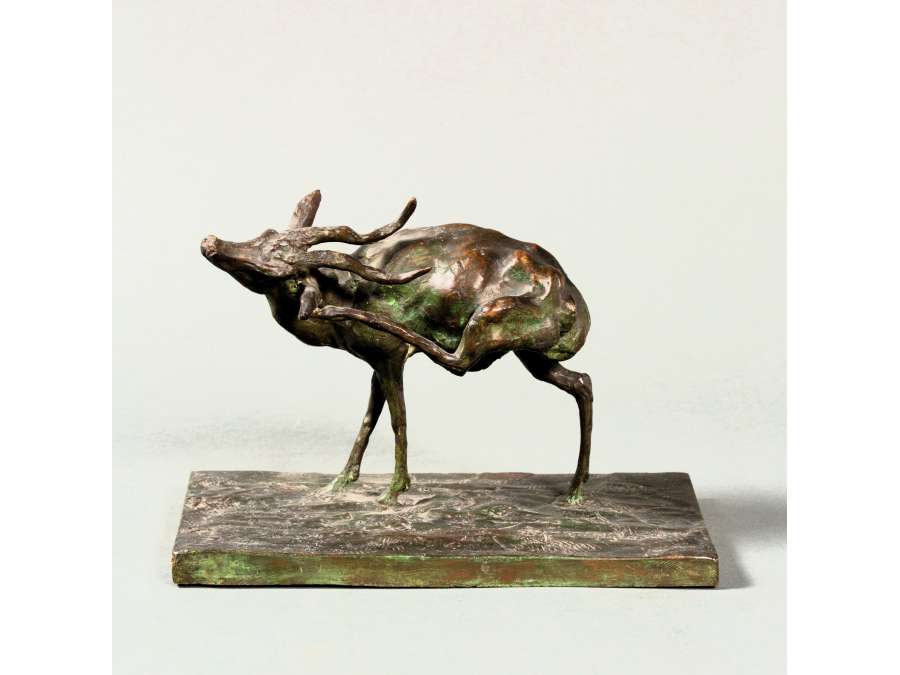This 1922 statue by Guido Rigehtti (1875-1958) depicts an antelope scratching its ear. Guido Righetti continued to rework his statues even though they had already been cast. This is probably the first version of this statue, as it is a slightly different version (with legs positioned a little differently) which can be found in the catalog raisonné on page 33. This casting has a dark bronze patina with shades of green. It is signed G. Righetti and is an old Italian font made during the artist's lifetime.
Biography: Guido Righetti (1875 - 1958)
On September 29, 1875, Guido Righetti was born in Milan. Through his mother, Guido Righetti belonged to the upper middle class of northern Italy, who rallied very early to the idea of Italian unity. In his youth, he frequented Casa Ricordi, a renowned music publishing house, where he would undoubtedly have rubbed shoulders with painters, poets and musicians in artistic and literary circles.
After classical studies, Righetti became interested in drawing, and it was animals that became the center of his work. He observes his subjects first-hand, both at the Milan zoo and at the natural history museum. His fortune allows him to devote himself entirely to his passion, animal sculpture. Advised by Prince Paul Troubetzkoy, a family friend and successful sculptor who at that time taught at the Academia Brera, whose influence was for a considerable time, he quickly found his own style. Righetti works in clay, wax and plastiline and often depicts the animals that surround his family country home in San Salvatore. His very fluid touch, which gives a velvety appearance to the surface of his bronzes, allowing us to speak of impressionism about his sculpture. He also knows how to give personality and expression to each of his models. In time, he moved to San Salvatore, his family's country home, on the barren heights of Mount Erba. The house had once been a Capuchin monastery.
He became very popular during the interwar period, when the Italian government and especially the Milanese municipality ordered statues from him to decorate parks, fountains and thermal baths. However, he did not participate in any way in glorifying the regime. Living as a recluse, he retired to the hermitage of San Salvatore in the upper Brianza valley, which belonged to his family, where he spent most of his life in fertile solitude. The outbreak of World War II, however, proved disastrous for his flourishing career. Several of his pieces were destroyed during the bombing of Milan in 1943 and others were removed from museums to recover bronze. Many of his works were melted down to recover metal for the war effort.
Ruined by the war, he had to abandon his hermitage in 1950 to return to live in Milan. Due to the difficult economic and political climate, he no longer received sculpture orders. Little is known of Righetti's output following the war, as the artist and his sculptures disappeared into obscurity. He died in Milan in 1958, forgotten and almost destitute.

 English
English  Français
Français














